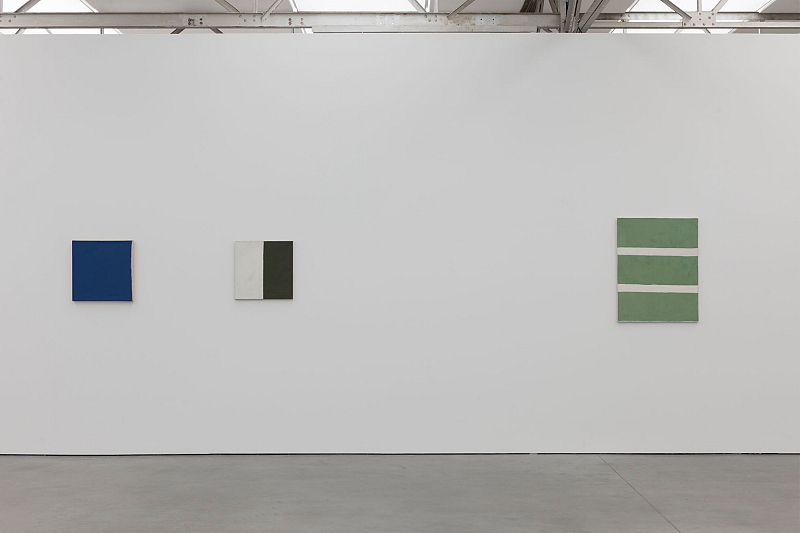De Pont receives important gift from private collector
De Pont has recently received a large number of works by the Belgian artist Raoul De Keyser as a gift of Wijnand Sengers. The Rotterdam psychiatrist Sengers has built an extensive art collection in recent decades. A focal point in this collection is Belgian artist Raoul De Keyser, of whom Sengers has acquired dozens of works. His own distinct and uncompromising view of painting make De Keyser an important artist whose work complements the collection of De Pont in a beautiful way.
Raoul De Keyser (Deinze 1930) was considered a representative of the Nieuwe Visie (new vision) in painting during the sixties. The subjects of these artists were taken from the day-to-day environment and reduced to flat forms of color and line. Together with Raveel, Elias and Lucassen, he painted the cellars of Beervelde Castle in 1966-67. From the seventies onward, his work became more abstract and simplified into forms that seem to be taken from the planar divisions of landscape. With a large number of works, the line pattern of a soccer field serves as his point of departure. But this element is no more than a means to arrive at a more profound investigation of the form and structure of a painting. The austere contours of the early work ultimately give way to a more liberal movement of the brush and paint. Planes and lines emerge as independent forms in free and colorful compositions. His work assumes an increasingly tranquil and poetic character; the potential of brushstroke and color seem to be explored continually. The Flemish art historian Ludo Bekkers describes this as follows: “Never does a work reach its conclusion. Often one can see, along the edges of the canvas, how it has been painted over in order to attain an acceptable result. But evidently it is never entirely acceptable, for the exploration continues in a subsequent work, sometimes with a different approach, a different formal structure, different use of color. And it is that very process of adaptation, self-correction and painting over which is so fascinating about this body of work. Its meaning is not to be found in the memory of reality, but in the quest for the ultimate painting whose previous steps are the memory.
Raoul De Keyser (Deinze 1930) was considered a representative of the Nieuwe Visie (new vision) in painting during the sixties. The subjects of these artists were taken from the day-to-day environment and reduced to flat forms of color and line. Together with Raveel, Elias and Lucassen, he painted the cellars of Beervelde Castle in 1966-67. From the seventies onward, his work became more abstract and simplified into forms that seem to be taken from the planar divisions of landscape. With a large number of works, the line pattern of a soccer field serves as his point of departure. But this element is no more than a means to arrive at a more profound investigation of the form and structure of a painting. The austere contours of the early work ultimately give way to a more liberal movement of the brush and paint. Planes and lines emerge as independent forms in free and colorful compositions. His work assumes an increasingly tranquil and poetic character; the potential of brushstroke and color seem to be explored continually. The Flemish art historian Ludo Bekkers describes this as follows: “Never does a work reach its conclusion. Often one can see, along the edges of the canvas, how it has been painted over in order to attain an acceptable result. But evidently it is never entirely acceptable, for the exploration continues in a subsequent work, sometimes with a different approach, a different formal structure, different use of color. And it is that very process of adaptation, self-correction and painting over which is so fascinating about this body of work. Its meaning is not to be found in the memory of reality, but in the quest for the ultimate painting whose previous steps are the memory.
